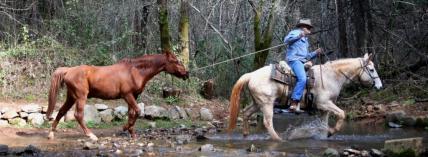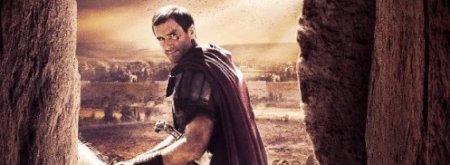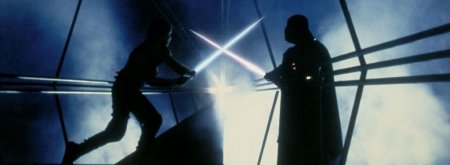Last Chance Saloon
The Lone Ranger (2013) has been such a flop at the US box-office that critics are heralding the death of the Western. Are these critics right? Can a single film kill one of cinema’s most long-standing and flexible genres?
When you think of Western films you might picture John Wayne swaggering through a set of saloon doors, or Clint Eastwood squinting into the sun. Alternatively, you might be reminded of Heath Ledger’s soft smile in Brokeback Mountain. Perhaps you might even imagine Toy Story’s cowboy Woody with his checked shirt and shiny stetson declaring, “There’s a snake in my boot!”, or think of the camp cowboy leather of The Village People.
We’re all familiar with the images and icons of the Western genre. Since Edwin S. Porter's The Great Train Robbery (1903), Westerns have been entertaining us with their hardy heroes on horseback galloping across desolate landscapes to triumph over the baddies. However, there’s much more to Westerns than cowboys and Indians. In an article for The Atlantic, Michael Agresta claims, “to discuss Westerns as if they just boiled down to heroic stories of saving the homestead from savages, tracking the bad guy through the wilderness, or finding the treasure in the mountains would be to miss the real meaning of the genre.”
What is this ‘real meaning’? Writing for The Telegraph, David Gritten describes the genre as a space for America to come to terms with its history and to explore some important themes:
“Westerns are about pioneers, frontier people, engaged in the business of creating a new society. They’re working out how to live their lives in a tough, competitive land with new (or no) rules. Westerns deal with land, greed, power, ambition and morality, the rule of law and the treatment of indigenous people.”
In his final book, Fractured Times, historian Eric Hobsbawn simplifies this list, writing: “The original image of the wild west [...] contains two elements: the confrontation of nature and civilisation, and of freedom with social constraint.” It all begins with the natural world. Cowboys find themselves in a harsh and desolate landscape which must be tamed. Conversely, this setting is also their spiritual home and in these remote surroundings they find themselves at peace, experiencing what the academic Stephen L. Tanner calls, “the healing power of primitive wilderness”.
What is this mystical experience and where does it come from? For John in The Lone Ranger, it comes in the form of a white spirit horse which awakens him from death and seems to be a symbol of Native Indian beliefs about the afterlife. For others it seems to be the expression of a primitive religion based in nature and the landscape.
Some critics have argued that it is an echo of the Christian faith which Westerns so often tussle with. Our heroes connect with their surrounding landscape because, as the Bible claims, nature is a sign of God’s power and creativity: “The heavens declare the glory of God, and the sky above proclaims his handiwork” (Psalm 19:1, ESV).
Kites’ Horizons West uses another Biblical image to describe the West through the cowboy’s eyes as, “a garden of natural dignity and innocence offering refuge from the decadence of civilization”. It is a kind of Eden, in which humans have the chance to start again and create civilisation from scratch. For our heroes, standing at the boundary of the American Frontier, it seems that anything is possible. With no rules and no restrictions, heroes are free to take matters into their own hands define justice for themselves. Here we reach Hobsbawn’s second theme ̶ freedom.
Our heroes are free to make their own decisions, or so it seems. In fact, they are faced by the huge weight of moral responsibility. As John Wayne declared in The Alamo (1960), in the world of the Western actions have serious physical and emotional implications: “There’s right and there’s wrong. You gotta do one or the other. You do the one and you’re living, you do the other and you may be walking around but you’re dead as a beaver hat.” John, the hero in The Lone Ranger, is determined never to shoot a man, because he is wed to strict moral principles. Sometimes, however, this means risking his own life, or simply relying on someone else to do the dirty work.
The eponymous character in the 1953 classic Shane reminds his beloved, “A gun is a tool, Marian; no better or no worse than any other tool: an axe, a shovel or anything. A gun is as good or as bad as the man using it. Remember that.” The weapons are not responsible for the bloodshed that occurs in the process of establishing civilisation. The people are responsible and they must use their freedom to make wise decisions. The Bible warns us that freedom should never be used as an excuse for sin: “Live as people who are free, not using your freedom as a cover-up for evil, but living as servants of God” (1 Peter 2:16). This is the challenge that faces our cowboy heroes every day.
John Steinbeck was right when he said, “A man on a horse is spiritually as well as physically bigger than a man on foot.” In amongst the action Westerns even open up chances for metaphysical reflection, offering us an enlarged version of spirituality which we can probe from a distance. This leads to a string of questions about morality: Does good always triumph over evil? What makes a true hero? How do we find true, meaningful justice? At what price freedom?
However, most modern Westerns lack this rich reflective tendency and have failed to draw audiences when set against superhero sequels, sci-fi space sagas and high-tech tales of apocalypse. Rich Hall’s BBC documentary How The West Was Lost concludes that “for the most part [Westerns since the 1970s are] just modern sensibilities dressed up in spurs - all hat and no cattle.”
In the last decade we’ve seen several attempts to prove Hall wrong, with the dark Unforgiven (1992), parodic Wild Wild West (1999), sci-fi Cowboys and Aliens (2011) and bloody Django Unchained (2012). These films engage with some of the genre’s important themes on new terms. They parody and expose the corruption of capitalism and the consequences of the bloody barbarism that flows from vigilante justice. They attempt to move beyond the traditional racial divide between the cowboys and the Indians. They commenting on familiar stereotypes and look at the world of the Western from new perspectives.
The Lone Ranger itself tells a familiar story from the perspective of the Native Indian Tonto, but Johnny Depp’s portrayal of the character was criticised for being regressive, offensive and even racist. The film comes unstuck because it positions itself as a compromise between traditional Westerns and modern reworkings of the genre. It seems both nostalgic for the Western and scornful of it, poking fun at the stereotypes and traditions of the Western genre. In doing so, it gives a particularly negative view of American history, presenting such a nasty cast of characters that film critic Robbie Collin claimed, “it may be the most anti-American blockbuster ever made”.
If that is enough to kill the Western, then we will have lost an important means of critiquing our society.
© 2013 Rachel Thorpe



